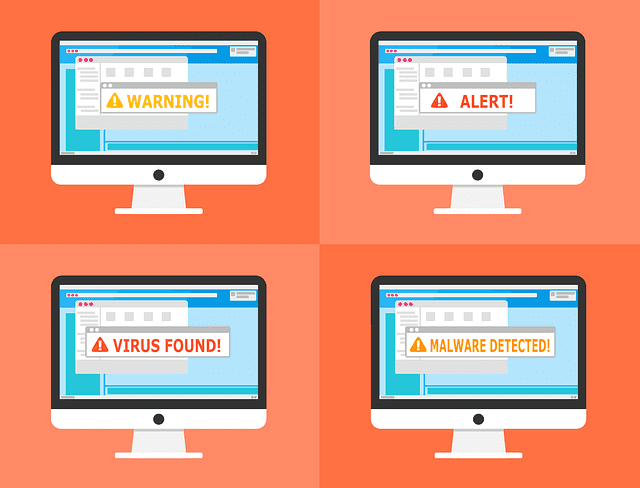A viral story is fake!?! If you have been on Facebook in the past month, chances are you have seen the viral story about Facebook charging a fee to keep your profile private. Obviously this was not a true viral story, but it still spread like wildfire throughout the internet. The Nerds on Call are here to spot a hoax before you end up passing it on to friends.
You may ask yourself what is the harm in sharing a viral story in case it is actually real, but stories like the one mentioned previously have been around since 2009. The original story had a link where visitors could go to “protest,” but in fact all it did was infect your computer with malware. If a fake story is only shared once, it is not likely to catch on, but if you share a fake story from a friend, chances are that the chain will continue, and even more people will see the hoax story.
To avoid being sucked into these fake viral stories, the first stop should be Snopes. Snopes allows you to search for the viral story you want to confirm. Most fake stories are in their database with facts behind the story. If you cannot find the story you are looking for, you can submit a rumor or photo for site moderators to inspect. Each report on the viral stories contains reliable sources presented in bibliographies.
Another site that offers hoax-busting reports is Gizmodo’s Factuality. Facuality posts info about the latest viral stories, including photos you may have seen. The information offered includes how the stories originated and the truth behind them if there is any. This site offers lists such as “9 viral photos that are totally fake,” and “Most Holidays are Fake,” which some people may find slightly heartbreaking.
With the 2016 elections just around the corner, it can be tough to determine a fake viral story in the midst of a barrage of political facts. Politifact helps separate political fiction from fact with tools like the “Truth-o-meter” which rates politician’s words on a scale from truth to Pants on Fire. Politifact allows you to confirm the legitimacy of a viral story before sharing it to your friends online. This program was launched in 2007 and has won a Pulitzer Prize for journalism, so you know you are in good hands.
If you stumble upon a photo that you believe to be fallacious but has not yet gone viral, go to Google Image Search and click search by image. You can drag the image from your desktop, or copy and paste the URL to queue up all instances where the image appeared online. Last year, this technique was used to debunk a viral story that stirred up controversy about Syrian refugees and ISIS. As it turns out, the photo in question originated in 2012 and had nothing to do with either Syrian refugees or ISIS. FotoForensics is another website that can help you verify if a photograph is real or not. Using error level analysis to identify parts in the image that may be modified, Fotoforensics can highlight areas where it detects alterations on the image.
There is a similar service to those mentioned above but for videos, called YouTube DataViewer. Created by a team at Amnesty International, it checks for other instances of the same video online in the hopes to prevent fraudulent uploads or false eyewitness claims. If the program discovers multiple instances of the same video, it will offer information, including the date which will enable you to identify the original upload.
Just remember, before you share that viral story, think twice about who might see it or click on it. Double check to be sure the story is true, and there are no harmful links or malware infections on the other end. Nerds on Call is always here to keep you using the best software to avoid those fake viral stories.

About The Author: Andrea Eldridge is CEO and co-founder of Nerds On Call, a computer repair company that specializes in on-site and online service for homes and businesses. Andrea is the writer of a weekly column, Nerd Chick Adventures in The Record Searchlight. She prepares TV segments for and appears regularly on CBS, CW and FOX on shows such as Good Day Sacramento, More Good Day Portland, and CBS 13 News, offering viewers technology and lifestyle tips. See Andrea in action at callnerds.com/andrea/.
Video Transcript
Keba Arnold: Social media is a powerful tool, spreading news and information at lightning speed, but sometimes those messages and images, they are made up, they are fake. So how can you tell if a viral story is a hoax? It’s Tech Tuesday today, Ryan Eldridge back with us today from Nerds on Call. Hi, Ryan.
Ryan: Hi.
Keba Arnold: So what’s the big deal? You’re sharing a story that’s not real, I mean what’s the harm in it?…besides looking silly.
Ryan: Yeah, well you also get a lot of likes and I mean a lot of popularity if it’s something really exciting.
Keba Arnold: Right.
Ryan: But, you know, there was just one that was just a few weeks ago and Mark Zuckerberg . . .
Keba Arnold: Facebook.
Ryan: . . . had to stand up and say it was fake, where they were saying they were going to start charging for privacy on Facebook. Well, what happens is a lot of these viral stories, when they get out, malware writers or virus writers will embed a link in those stories. And so, for example, that story about privacy originated in 2009, and there was a link in there that said, “Click here to protest.” And if you clicked that link it would start infecting your computer and then you’d be stuck. And if you’re the one spreading that rumor around, you’re actually helping spread that malware . . .
Keba Arnold: Okay.
Ryan: . . . all over the place.
Keba Arnold: Okay, I see the harm, I see the bad in it. What can you do? You are on the internet, you run across something that seems interesting but maybe a little bizarre, maybe too good to be true, how can you tell?
Ryan: Well, my first stop is always snopes.com.
Keba Arnold: Right.
Ryan: S-N-O-P-E-S.com. This is a great place. You can post basically the headline of the story in there or just some of the facts of the story and what it’ll do is it’ll give you all of the information about where that story started, whether it’s fake or not . . .
Keba Arnold: Okay, like a search engine?
Ryan: Yeah just like a search engine.
Keba Arnold: Okay.
Ryan: And they give you actually a bibliography that will backtrack all of the facts for you and so you can see where it originated and how it got online in the first place. And if you don’t see it on there, you can click “Submit a Rumor” and then the site moderator will look at your rumor and then get back to you and tell you whether or not that’s fake or not.
Keba Arnold: Okay. Snopes.com what else do you have?
Ryan: Yeah. There’s a place called Factually.gizmodo.com.
Keba Arnold: Okay.
Ryan: Its’s just factually. There what they do is they pull out all different videos and photos and different stories online and determine whether or not they’re real or not. For example, they just did one on nine viral videos or nine viral photos that’re totally fake, and most holidays are fake. For example, there is no such thing as National Tequila day, which kind of stinks.
Keba Arnold: Right?
Ryan: But it’s a great place to…In fact, one of my favorite lines from the site says that most things on the internet are gonna be fake and so you should trust those instincts.
Keba Arnold: Okay so what was that website again?
Ryan: That’s factually.gizmodo.com.
Keba Arnold: Okay Ryan, it’s election season.
Ryan: Yeah.
Keba Arnold: So when it comes to politics, you might see this great story about Donald Trump . . .
Ryan: Yeah!
Keba Arnold: . . . or Jeb Bush or Hillary Clinton…How do you know if it’s true?
Ryan: You go to a great place called politifact.com. And at politifact, what it does is it takes everything that a political figure or a national celebrity will say and then it fact checks it. This was originally posted in 2007 as kind fo a test by the Tampa Bay Times, and they won a Pulitzer Prize for journalism. And they have a great Truth-o-Meter you can see on the screen there that will rate their truthiness . . .
Keba Arnold: Okay.
Ryan: . . . from truth all the way to pants on fire. And so Donald Trump might say something really exciting and then you find out, oops, that wasn’t actually real . . .
Keba Arnold: Pants on fire as in liar, liar pants on fire?
Ryan: Yes!
Keba Arnold: Okay, so those are some good sites when it comes to just the stories out there . . .
Ryan: Yes
Keba Arnold: What about the photo, hasn’t gone viral yet but it is a beautiful image or a scary image, how can we check these photos?
Ryan: Yeah, so Google images has a wonderful tool. So you just go to google and type in googleimages.com and what it’ll do is it will find every instance of a photo anywhere on the internet and trace it back by date. And so if you’ve got that photo, if you’ve got the URL, you can put it in there or you can drag and drop it on there.
Keba Arnold: Okay.
Ryan: And it will tell you. Or the other one that they’re showing on the screen there is fotoforensics.com.
Keba Arnold: Okay.
Ryan: This is great because what it’ll do is it will actually look at the photo on an error level like a code level and it will determine if anything has been modified in the photo, and if it has, it will highlight it for you. So you can determine whether it has been photoshopped or if it’s just a fake or if there’s two separate instances of it.
Keba Arnold: Hey, what about…So that’s photos, and there has to be one for videos.
Ryan: Yeah, so Amnesty International came out with a great one. You can get this with amnestyusa.org/citizenevidence. And here you can upload a YouTube video or a link to a YouTube video and it will also send you back to the dates to determine when it was originally posted. A lot of people, they see a cool video, they download it to their computer . . .
Keba Arnold: Right.
Ryan: . . . and then re-upload it and kind of say, “Hey! Look what I saw this cat video” or something, and you can kind of trace it back and determine where it originally came from.
Keba Arnold: And again we are gonna wrap it up. All these videos, I mean all these websites for us to go to. Again, why is it important not to share these hoax stories? You can really get yourself in trouble.
Ryan: You can get yourself in trouble. You’re just spreading rumors that aren’t true. You can kind of look silly if it turns out they aren’t right, but there’s also sometimes codes in there that can get you infected . . .
Keba Arnold: That’s what stand out to me.
Ryan: . . . Yeah, and that’s gonna be pretty scary. Or even it’s just simple…We want to have a political forum or just a forum on the internet where we are truthful and we wanna hunt those things down and get rid of them.
Keba Arnold: I love it. All right Ryan Eldridge, co-founder of Nerds On Call. Thank you, Ryan.
Ryan: You’re welcome.
Video Transcript
Ken: Marianne’s with our friend at Nerds on Call with what to look for when determining if a story is real or not.
Marianne: Well I’m glad to see that they’ve already got my go-to website up to check this out. Ryan Eldridge is with Nerds on Call. There is so much out there. You don’t want to assume that things are real but you don’t want to assume they’re fake, so how do we find out?
Ryan: Well first my go-to site, just like yours we were talking about earlier, is go to Snopes.com
Marianne: Right, right. Great.
Ryan: Check to see if that viral story is real. There was a viral story going around a few weeks ago about how Facebook was going to start charging for privacy on Facebook for $6 and there was a link in the post that said “Protest Now.” If you clicked that link, you got an infection.
Marianne: Aaa!
Ryan: And your computer would start getting viruses and all kinds of stuff. So most of these viral stories, while they’re just to make us look foolish like “Oh look what we fell for.”
Marianne: Right.
Ryan: But some of them can have some nefarious undertones. So be careful, don’t click on things you shouldn’t click on, and if it goes to a website you’re not sure of close it out quickly.
Marianne: Right. So I know people try to debunk Snopes as not being a good source for finding out, but it’s great and they’re very fair!
Ryan: Yeah!
Marianne: And it doesn’t always work out in your favor. Sometimes it’s really true.
Ryan: And you can search by keyword or headline. And if you don’t see a video or a story on there and you’re “I think this is fake and I don’t see it on there,” you can send it to the site moderators by clicking the report button.
Marianne: I love that.
Ryan: And they’ll get back to you and let your know whether it’s fake or not and post it all on there.
Marianne: All right. Cool!
Ryan: So here’s another cool thing is, there was another viral video about a fish coming alive while a lady was eating it.
Marianne: Ahh!
Speaker: Oh stop!
Ryan: Yeah. This is a place called “factually.gizmodo.com” and they go around just like Snopes, but they find more sensational stuff. And so they have kind of a cool video here about pouring soy sauce on a squid and it comes to life.
Marianne: Aah!
Ryan: Turns out it’s just an involuntary reflex that’s happening with the tissues, but this will give you the background of what that means and why it’s happening.
Marianne: Alright.
Ryan: Here’s another great one for the political season. Politifact.
Marianne: These guys are good.
Ryan: Yeah! This is great! Any time a political or celebrity says something they fact check it so you can find out if it’s real or not. So of course Donald Trump’s on here a lot. I’m not going to say what that says.
Marianne: No, no, no.
Ryan: You can tell on your own.
Marianne: Exactly. So the ratings go from “True” to “Pants on Fire!”
Ryan: Yeah.
Marianne: Which is like the highest status of lying that you can get! “Pants on Fire!” That just cracks me up.
Ryan: Yeah. This is great. It’s great for the debate season. So if somebody says something pretty sensational and you’re “oh, that sounds pretty cool…”
Marianne: “…what?!”
Ryan: Then you can look it up.
Marianne: Yeah. These guys are on it. These guys are on it.
Ryan: So here’s another great thing. Right now there’s a lot of refugee/anti-refugee stuff going in different states and over in Europe. Obviously they don’t want Syrian refugees. And so this photo started coming out showing Syrian refugees holding an ISIS flag on the steps of one of the German parliament buildings.
Marianne: Seeming to uphold the argument that they shouldn’t be allowed into Europe.
Ryan: Yeah, this is now…a conservative blog has taken this over. It’s starting to go viral. Turns out, that is a completely false picture. It’s been around since 2012, and it turns out the flag was photoshopped. And here’s some cool ways you can figure that out. One, you can go to “fotoforensics.com”, and what fotoforensics will do is, it’ll look at the picture itself and determine if it’s been photoshopped. And it’ll show you where it’s been photoshopped.
Marianne: Oh, interesting.
Ryan: So here’s a lovely picture of a model, and you can see how she looks normal. Quite beautiful. And then of course, they photoshop it, not sure why, but you can see where the errors took place. It’ll show you a heat map and it’ll show you what’s been fixed and what hasn’t been fixed.
Marianne: And one more.
Ryan: And then lastly, if you’ve got a viral video on YouTube and you’re like “Ahh, where did that come from? It’s weird that I’ve seen this before, I think.” You can just post the link into amnestyusa.org/citizenviewer.
Marianne: Great.
Ryan: Put it in there and it’ll tell you when that video was first posted.
Marianne: Awesome.
Ryan: And give you all of the different history of it.
Marianne: Love that. Alright you can find all of these links on your blog which is?
Ryan: Callnerds.com/blog.
Marianne: Ok. We’ll get that linked to our website as well. Ryan, thanks very much!
Ryan: You’re welcome!
Marianne: Always good stuff. Back to you.







